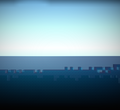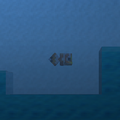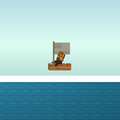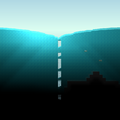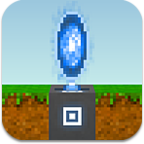Ocean: Difference between revisions
>Abcboy mNo edit summary |
>Zaknerd No edit summary |
||
| Line 1: | Line 1: | ||
{{Stub}} | {{Stub}} | ||
[[File:Shark Beneath Boat.png|thumb|200px|A shark under a boat at sea]] | [[File:Shark Beneath Boat.png|thumb|200px|A shark under a boat at sea]] | ||
'''Oceans''' consist of large bodies of [[water]] [[block]]s. They are | '''Oceans''' consist of large bodies of [[water]] [[block]]s. They are usually very deep with sloping shorelines, usually with [[sand]] near the surface. Sometimes, there may be small deposits of black sand as well, near the shores. They sometimes surround small islands. Most coastlines have [[beach]]es. | ||
While they can be crossed by [[swimming]], they are traveled faster by [[boat]]. | While they can be crossed by [[swimming]], they are traveled faster by [[boat]]. | ||
Revision as of 15:05, 17 April 2015
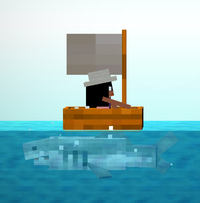
Oceans consist of large bodies of water blocks. They are usually very deep with sloping shorelines, usually with sand near the surface. Sometimes, there may be small deposits of black sand as well, near the shores. They sometimes surround small islands. Most coastlines have beaches.
While they can be crossed by swimming, they are traveled faster by boat.
The presence of an ocean on the surface may indicate a lowering of the beginning of magma below it.
Oceans in temperate climates may freeze over during the season of winter. This turns most of the surface blocks into ice. Oceans especially close to the poles may be permanently frozen, and not thaw even in summer.
Flora
Fauna
Gallery
-
An ocean that froze over
-
A fish caught in forming ice
-
Three sharks together in the ocean
-
Due to some quirk, a boat passing through snow piled on water (i.e. just-melted ice) may take to the air
-
An ocean draining into an unidentified submarine cave, triggered by a blockhead approaching
